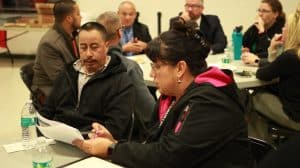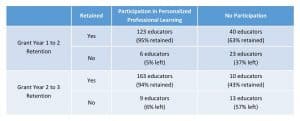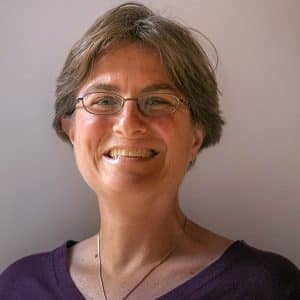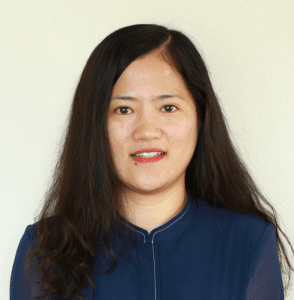Personalizing Professional Learning to Increase Student Growth: Lessons from Lindsay Unified School District
CompetencyWorks Blog

Given the abundant challenges of remote and hybrid learning, it has become critical for districts to provide educators with professional learning that directly meets their needs. Even before the COVID pandemic, Lindsay Unified School District (LUSD) began implementing a personalized professional learning program designed to cultivate the same mindset in its educators that it spent the past decade fostering in its students—that learning is an ongoing process and professional learning should be targeted, personalized, and data-driven.
During three academic years (2017-2020), Lindsay educators voluntarily participated in professional learning that covered both content-specific topics and broader instructional strategies like project-based, blended, or personalized learning. They could also choose from a range of options that required varying time commitments and levels of expertise: multi-day academies and micro-credentials that included coaching and classroom observations, single-day workshops, asynchronous online courses, and even graduate-level courses as part of master’s degree programs. Depending on the grant year, from 148 to 188 educators and specialists participated in these professional learning opportunities. As part of the program, they received a stipend for their participation and could choose to earn additional certification awards.
In collaboration with us at The Learning Accelerator (TLA), LUSD then set out to identify which professional learning combinations would be most powerful for increasing learner growth. We conducted a series of studies to understand the effects of different combinations of high-quality, personalized, performance-based professional learning on student achievement as measured by students’ progress through core competencies in English language arts (ELA), math, history/social studies, and science. Using a statistical modeling strategy called cluster analysis, we first identified various combinations based on educators’ average completion rates of different types of professional learning opportunities by structure (e.g., workshops, academies, online courses). For example, one group may be described as having a low participation rate in a combination of master’s courses, workshops, and academies while another could have high participation in academies and micro-credentials.
We then examined the effects of those combinations of professional learning on students’ progress through core competencies. Additionally, we conducted descriptive analysis to determine whether other characteristics within those combinations might have played a role. Specifically, we looked at the relationship between the average participation rate by focus area (i.e., ELA, math, history, social studies, science) and growth in those associated standards as well as the site-based conditions such as educator retention, sustained leadership, and learner demographics that could have also influenced our measurement of learner growth.
Our analysis revealed that certain characteristics of professional learning and the conditions in which that learning occurred positively correlated with learner growth. In particular, we noted a positive effect associated with program quality, focus area of the professional learning, community structures, and personalization. The following sections further explore these factors.
The Importance of Program Quality
Each experience designed by LUSD adhered to at least one principle of professional development quality as defined by a large-scale study from the American Institutes for Research and the U.S. Department of Education. With the exception of some master’s degree courses, every LUSD opportunity focused on specific content areas or skills that directly related to daily practice. Additionally, many occurred over multiple weeks—rather than the traditional one-and-done workshop—affording educators opportunities to engage in hands-on learning such as lesson-planning or direct observation.
When looking at the various combinations of professional learning that educators completed and their effects on learner growth, we noticed that the overall quality of the combination—as determined by the cluster analysis—had a greater effect than the quantity of completed experiences. For example, one combination that was strongly associated with student ELA growth included relevant, focused instruction; coaching, classroom observations, and hands-on learning through participation in academies and micro-credentials; and ongoing participation over multiple years during the program. Across grant years, participation in combinations of opportunities that adhered to multiple tenets of quality served as a critical indicator of learner growth.
Focused Professional Learning
All TK-8 learners in LUSD reside in self-contained classrooms, meaning that they have the same educator for all core content area instruction. In our analysis of K-8 learner growth, we found a positive association between the focus area of professional learning experiences and learners’ growth in that same focus area. For instance, the cluster whose combination of professional learning included the highest average participation rate in science was associated with more learner growth in science. Similar findings became apparent for educators who participated in math-specific professional learning workshops. Interestingly, professional learning clusters that included substantial participation in professional learning that focused on English Learner Development was also associated with learners who demonstrated more growth in ELA literacy and reading.
While the premise of the LUSD personalized professional learning program was to allow for more educator choice, these findings suggest that if the district intends to improve learner outcomes in specific content areas, then it needs to ensure that educators focus their attention on those subjects. This is especially important at the K-8 levels when educators are responsible for teaching all of the core content areas.
Fostering a Community of Learners
Across the three grant years, two TK-8 schools (Roosevelt and Washington) consistently had some of the highest participation rates in professional learning. The educators from these two schools also completed similar combinations of professional learning, and these combinations appeared to have a positive effect on growth in ELA, as well as either history/social studies or science. While Roosevelt and Washington differed in terms of their size and the demographics of their learners, they did have three points in common: principals with extended tenure in the school, relatively high teacher retention, and high participation in professional learning.
In a 2011 article about how knowledge and professional learning flow through schools, the authors described three conditions that help educators translate their learning into practice. When getting started, educators need focused instruction. Then, as they become more comfortable, educators need time to fiddle and receive feedback. Finally, to make a new practice become permanent, educators need friends for support. Although it was beyond the scope of our analysis, we inferred that these three things may have occurred in Washington and Roosevelt thanks to the stability and consistency in principal leadership as well as the relatively high teacher retention.
A Benefit of Personalizing Professional Learning: Teacher Retention
At the heart of Lindsay’s personalized professional learning model is the belief that more teachers will stay in a district that has invested heavily in their development. As shown in the table below, we did identify a relationship between participation in personalized professional learning and faculty retention.

Based on these observations, we believe that the relationship between participation in personalized professional learning and retention needs to be further explored. We can infer that when educators feel supported in something that they find meaningful, then it may increase their desire to remain in their school. However, we are uncertain as to whether the personalization of the experience or the professional learning itself most contributed to faculty retention.
Plans for the Future
At the start of the study, we thought that our analysis might identify effective combinations of professional learning based on structure (e.g., learning academy or workshop). Instead, we observed that key characteristics (program quality, focus area of the professional learning, community structures, and personalization) were better predictors of learners’ success. To improve the impacts of professional learning based on these findings, we think that future studies should also address three key considerations.
- Measures of Program Quality: In particular, we should define and measure indicators of hands-on or active professional learning. Just because the professional learning intended for those practices to happen, we have little understanding of whether they occurred with fidelity.
- Informed Agency: Educators were encouraged to personalize based on their perceived interests and personal goals. Future efforts should incorporate active reflection and the use of data to help educators move beyond choices based primarily on interest or preference and instead guide them towards professional learning that would best support their learners.
- The Effects of Site-Based Conditions: Although we described site-based conditions within each school such as teacher retention and principal tenure, we did not have the data to correlate the influence of those conditions on learner growth. Communication patterns, social networks, and strength of community within each school and across the district may all be areas to examine in relation to the effects of personalized professional learning.
Our second blog post in this series focuses on how three components from the LUSD personalized professional learning program—agency, mastery, and community—might translate into more meaningful personalized learning experiences for students.
Learn More
- Personalizing Professional Learning to Strengthen Personalized Learning for Students
- Personalizing Learning for Educators: Measuring What Works
- Strong Evidence of Competency-Based Education’s Effectiveness from Lindsay Unified School District
 Dr. Beth Holland is a Partner at The Learning Accelerator (TLA), where she leads their research and measurement work. With over 20 years of education experience, she has taught in K-12 classrooms, served as Director of Academic Technology, designed professional learning, developed leadership programs, and conducted research evaluations. Additionally, she is a prolific writer and speaker. Beth received her doctoral degree in Entrepreneurial Leadership in Education from Johns Hopkins University.
Dr. Beth Holland is a Partner at The Learning Accelerator (TLA), where she leads their research and measurement work. With over 20 years of education experience, she has taught in K-12 classrooms, served as Director of Academic Technology, designed professional learning, developed leadership programs, and conducted research evaluations. Additionally, she is a prolific writer and speaker. Beth received her doctoral degree in Entrepreneurial Leadership in Education from Johns Hopkins University.
 Dr. Ling Zhang is a Research Assistant at The Learning Accelerator (TLA). She received her doctoral degree in special education from the University of Kansas where she primarily focused on the design, implementation, and measurement of personalized learning to support learner variability from the lens of universal design for learning (UDL). Ling also has a Master’s degree in applied linguistics and was formerly an educator in China.
Dr. Ling Zhang is a Research Assistant at The Learning Accelerator (TLA). She received her doctoral degree in special education from the University of Kansas where she primarily focused on the design, implementation, and measurement of personalized learning to support learner variability from the lens of universal design for learning (UDL). Ling also has a Master’s degree in applied linguistics and was formerly an educator in China.